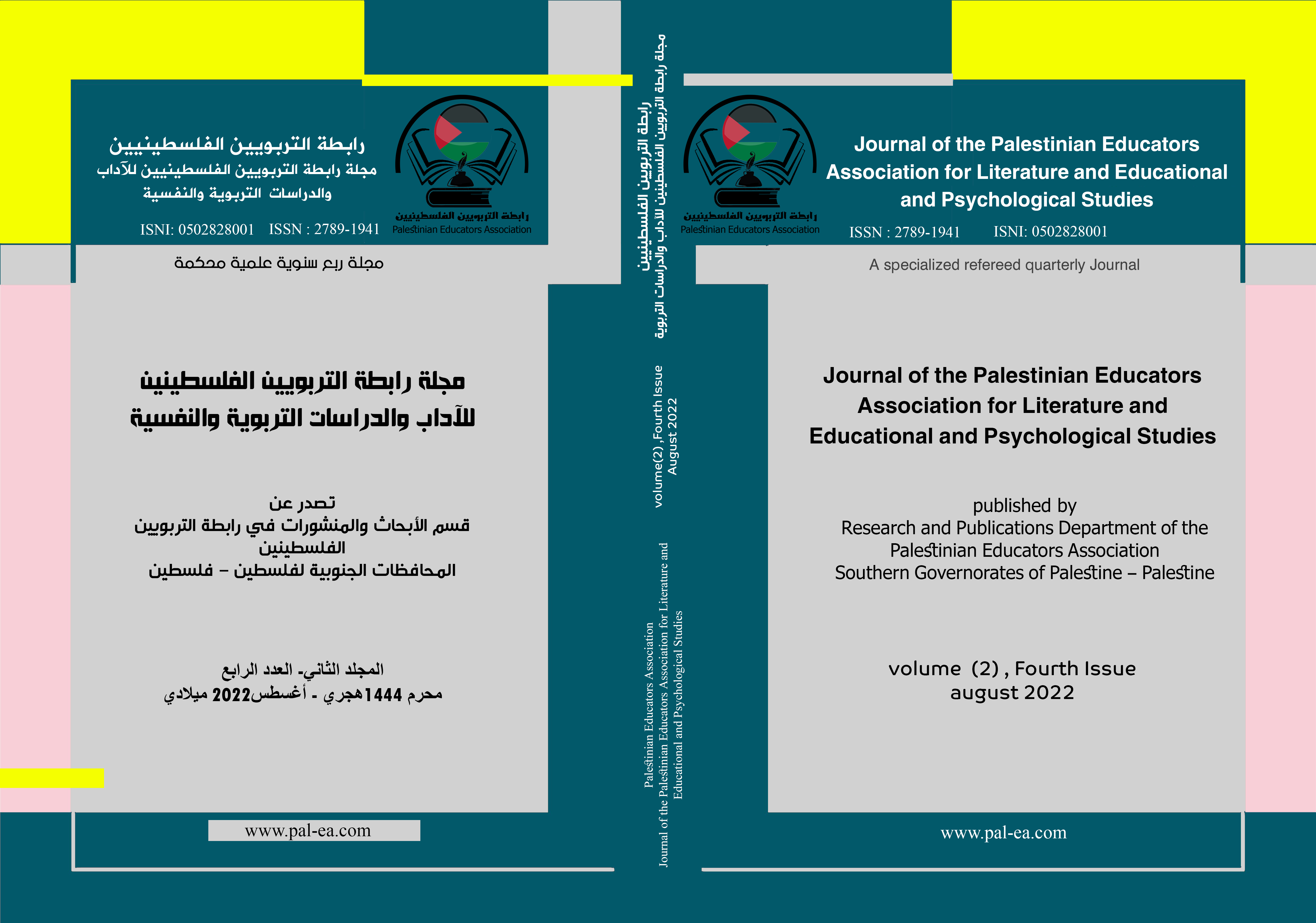The extent of using and motivating activities in the 8th grade mathematics curriculum for creative thinking strategies "An analytical study"
DOI:
https://doi.org/10.69867/PEAJ037Keywords:
8th grade mathematics, book activities, creative thinking, content analysisAbstract
This study aimed to analyze the activities of 8th grade Palestinian math book; In regards to its inclusion of the elements of creative thinking, as well as the extent to which the international standards are used in activities by teachers, and the extent to which the curriculum and teachers have motivated students on these skills. To achieve the aim of the study, an analysis card was built based on the Al-Asmar Analysis Card (2016), The results of the analysis of the book's activities showed that the curriculum contained a good percentage of creative thinking elements in general, where the percentage amounted to approximately 70%, but the results was not good with element of originality, which did not exceed 15%. Also, the ratio of teachers’ activation of these elements is 61.5%, which is less than 70% the percentage of the activities that contain elements of creative thinking in the book, and this is not satisfactory at all. The percentage of teachers activating the element of originality (one of the elements of creative thinking) in teaching students was absent. Finally, the study recommended that the Ministry of Education re-evaluate all mathematics curricula in all their content, and the extent to which they contain activities that activate and stimulate the elements of creative thinking among students. As well as holding effective training workshops for teachers to activate creative thinking among students while teaching.
Downloads
References
المصادر والمراجع
أولاً: المراجع العربية:
- البياتي، بيداء محمد أحمد (2020)، " التفكير الابداعي وعلاقته بالتحصيل في مادة الرياضيات" كلية التربية الأساسية – الجامعة المستنصرية، مجلة الأستاذ للعلوم الإنسانية والاجتماعية. مجلد 59، عدد1. ص 138-161.
- الأسمر، الاء رياض (2016)، " مهارات التفكير المنتج المتضمنة في محتوى مناهج الرياضيات للمرحلة الأساسية العليا، ومدى اكتساب طلبة الصف العاشر لها "رسالة ماجستير، كلية التربية، الجامعة الإسلامية، غزة.
- الشرقاوي، أنور محمد (1999)، "الابتكار وتطبيقاته" مكتبة الأنجلو المصرية، القاهرة، مصر.
- باكرمان، منال عمر. (2002). مستقبل أطفال ذوي صعوبات التعلم في المدرسة. ورقة عمل مقدمه لندوة (مدرسة المستقبل) - كلية التربية - جامعة الملك سعود 22 - 23 اكتوبر 2000.
- محي، مائدة. جبر، ندية. (2017). تطوير المناهج الدراسية من وجهة نظر المدرسين في مدارس التعليم الثانوي في محافظة البصرة - مجلة ابحاث البصرة للعلوم الانسانية العدد ٥- المجلد 42.
- ربايعة، محمد (2011)، دراسة تحليلية لمقررات التاريخ لصفوف المرحلة الأساسية العليا في فلسطين في ضوء معايير التتابع والتكامل، مجلة جامعة القدس المفتوحة للأبحاث والدراسات التربوية، 1، الصفحات 125-174.
- وزارة التربية والتعليم الفلسطينية، (2016)، وثيقة الإطار المرجعي لتطوير المناهج، مركز تطوير المناهج، رام الله.
- وزارة التربية والتعليم العالي الفلسطينية (2008). الخطة الإستراتيجية للتطوير التربوي 2008-2012 نحو نوعية التعليم من أجل التطوير، رام الله، فلسطين.
المراجع العربية الإنجليزية
- Al-Bayati, B. (2020), “Creative thinking and its relationship to achievement in mathematics,” College of Basic Education - Al-Mustansiriya University, (in Arabic), Al-Ustad Journal for Humanities and Social Sciences. Volume 59, Number 1. pp. 138-161.
Al-Asmar, A. (2016), “Productive thinking skills included in the content of mathematics curricula for the upper basic stage, and the extent to which tenth grade students acquire them,” (in Arabic), master’s thesis, College of Education, Islamic University, Gaza.
Al-Sharqawi, A (1999), “Innovation and its Applications” (in Arabic), Anglo Egyptian Bookshop, Cairo, Egypt.
- Packerman, M. (2002). The future of children with learning difficulties in school. (in Arabic), a working paper presented to the symposium (School of the Future) - College of Education - King Saud University 22-23 October 2000.
- Mohie, M. Jabr, N. (2017). Curriculum Development from the Perspective of Teachers in Secondary Education Schools in Basra Governorate - (in Arabic), Basra Research Journal for Human Sciences Issue 5 - Volume 42.
- Rabia, M. (2011), an analytical study of history courses for the upper basic stage classes in Palestine in light of the standards of succession and integration, (in Arabic), Al-Quds Open University Journal for Research and Educational Studies, 1, pages 125-174.
- Palestinian Ministry of Education, (2016), Document of Reference Framework for Curriculum Development, (in Arabic), Curriculum Development Center, Ramallah.
- Palestinian Ministry of Education and Higher Education (2008). Strategic Plan for Educational Development 2008-2012 Towards Quality Education for Development, (in Arabic), Ramallah, Palestine.
ثانياً: المراجع الأجنبية:
-Holt، J.(1969). Teachers Talk Too Much. The Under-Achieving School. New York: Pitman Publishing Corporation.
Downloads
Published
Issue
Section
License

This work is licensed under a Creative Commons Attribution-NonCommercial-ShareAlike 4.0 International License.
The Journal of the Palestinian Educators Association for Literature, Educational and Psychological Studies
E-issn: 2789-1941
Authors retain Copyright
The Journal of the Palestinian Educators Association for Literature, Educational and Psychological Studies allows Authors retain Copyright and grant the journal right of first publication with the work simultaneously licensed under a Creative Commons Attribution (CC-BY) 4.0 License that allows others to share the work with an acknowledgment of the work’s authorship and initial publication in this journal.
Provided they are the owners of the Copyright to their work, authors are able to enter into separate, additional contractual arrangements for the non-exclusive distribution of the journal’s published version of the work (e.g., post it to an institutional repository, in a journal or publish it in a book), with an acknowledgment of its initial publication in this journal.
Authors are permitted and encouraged to post their work online (e.g., in institutional repositories, disciplinary repositories, or on their website) prior to
and during the submission process.










